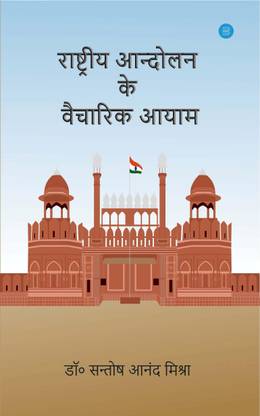Madhav Sadashivrao Golwalkar (19 February 1906 – 5 June 1973)
Madhav Sadashivrao Golwalkar popularly known as Guruji, was the second Sarsanghchalak (Chief) of the Rashtriya Swayamsevak Sangh (RSS), a Hindutva organization in India. He is regarded as one of the most influential leaders of the RSS and played a crucial role in expanding its reach and shaping its ideology.
Early Life and Education
Golwalkar was born in19 February 1906 in Ramtek, Central Provinces and Berar, British India, into a Marathi Karhade Brahmin family. His father, Sadashivrao, worked as a teacher and later became the headmaster of a high school. Golwalkar was the only surviving son among nine siblings.
During his early years, Golwalkar developed a deep interest in religion and spiritual meditation. He studied at Hislop College in Nagpur but later transferred to Banaras Hindu University (BHU), where he completed a Bachelor of Science (BSc) in 1927 and a Master of Science (MSc) in Biology in 1929. He also pursued a law degree and later worked as a lecturer of zoology at BHU.
Entry into the RSS
Although Golwalkar initially did not take a keen interest in the RSS, he was eventually drawn into its activities under the influence of K. B. Hedgewar, the founder of the organization. Hedgewar recognized Golwalkar’s potential and encouraged him to complete his law degree to gain credibility as a leader.
In 1934, Golwalkar was appointed secretary (karyavah) of the Nagpur branch of RSS. He briefly left the RSS in 1936 to join the Sargachi Ramakrishna Mission Ashram in West Bengal in pursuit of a spiritual life. However, after the death of his guru, Swami Akhandananda, he returned to the RSS in 1937 at Hedgewar's insistence.
Rise to RSS Leadership
By 1939, Golwalkar was managing the All-India Officers' Training Camp for the RSS, demonstrating his organizational skills. Hedgewar, before his death in 1940, named Golwalkar as his successor. On 3 July 1940, Golwalkar was formally announced as the 2nd Sarsanghchalak of the RSS.
Under his leadership, the RSS grew significantly, with its membership increasing from 100,000 to over one million. He expanded its activities into various fields, including politics, education, labor, and religion, and helped establish several affiliated organizations under what later became known as the Sangh Parivar.
RSS Policies and Ideology
Golwalkar strongly advocated for the idea of Hindu Rashtra (Hindu Nation), which he believed was essential for India's unity and cultural identity. His views were largely shaped by his concerns over the threats to Hinduism from Muslims, Christians, and Communists.
He is also known for his controversial 1939 book, We, or Our Nationhood Defined, which has been criticized for its similarities with Nazi ideology, particularly in its views on nationalism and ethnic purity. In the book, Golwalkar praised Nazi Germany’s policies on racial purity, stating that India could learn from Germany’s example in maintaining cultural homogeneity.
However, despite these views, Golwalkar supported the British during World War II against Hitler and Nazism, and he also expressed admiration for the Jewish people and their efforts to establish Israel.
Golwalkar emphasized that people following Semitic religions (such as Islam and Christianity) must either adopt Hindu culture or live as subordinates to the Hindu majority. He believed that citizenship and rights in India should be based on adherence to Hindu cultural values.
Golwalkar and the Indian Freedom Struggle
Golwalkar’s approach to the Indian independence movement was markedly different from that of the Indian National Congress. He discouraged RSS members from participating in the Quit India Movement (1942), arguing that opposing the British was not the priority—instead, Hindus should conserve their strength for internal enemies, such as Muslims, Christians, and Communists.
This stance led to criticism, as the RSS under his leadership did not actively engage in the independence struggle against British rule.
Post-Independence and RSS Ban
Following the assassination of Mahatma Gandhi on 30 January 1948 by Nathuram Godse, who had links with the RSS, the Indian government banned the organization on 4 February 1948. Golwalkar and 20,000 RSS volunteers were arrested. Although no official connection between the RSS and Gandhi's assassination was proven, Gopal Godse, Nathuram’s brother, later stated that Nathuram had never truly left the RSS.
After negotiations with Home Minister Sardar Vallabhbhai Patel, Golwalkar agreed to adopt a written constitution for the RSS and formally accepted the Indian national flag, leading to the lifting of the ban on the RSS on 11 July 1949.
Later Years and Legacy
Golwalkar remained the Sarsanghchalak of the RSS until his death on 5 June 1973. Under his leadership, the RSS became a powerful socio-political force, laying the groundwork for future Hindu nationalist movements in India.
His ideas on Hindutva, Hindu Rashtra, and the role of minorities in India continue to influence right-wing politics in India, especially through organizations like the Bharatiya Janata Party (BJP) and other members of the Sangh Parivar.
Controversies
Golwalkar's legacy remains highly polarizing. Critics argue that his views were exclusionary and inspired by fascist ideologies, while supporters see him as a visionary leader who worked for Hindu unity and nationalism.
In recent years, proposals to name public institutions after him, such as the second campus of the Rajiv Gandhi Centre for Biotechnology in Kerala, have led to political controversies and opposition from parties like the Communist Party of India (Marxist).
Conclusion
Madhav Sadashivrao Golwalkar was a key figure in shaping the ideology of the RSS and the broader Hindutva movement in India. His leadership expanded the RSS’s influence, but his views on nationalism, minorities, and the caste system continue to be widely debated.












4 Comments
👏👏👏👏
ReplyDelete🙏🙏🙏
ReplyDeleteNice Writing and informative
ReplyDeleteVery informative
ReplyDeleteThank you